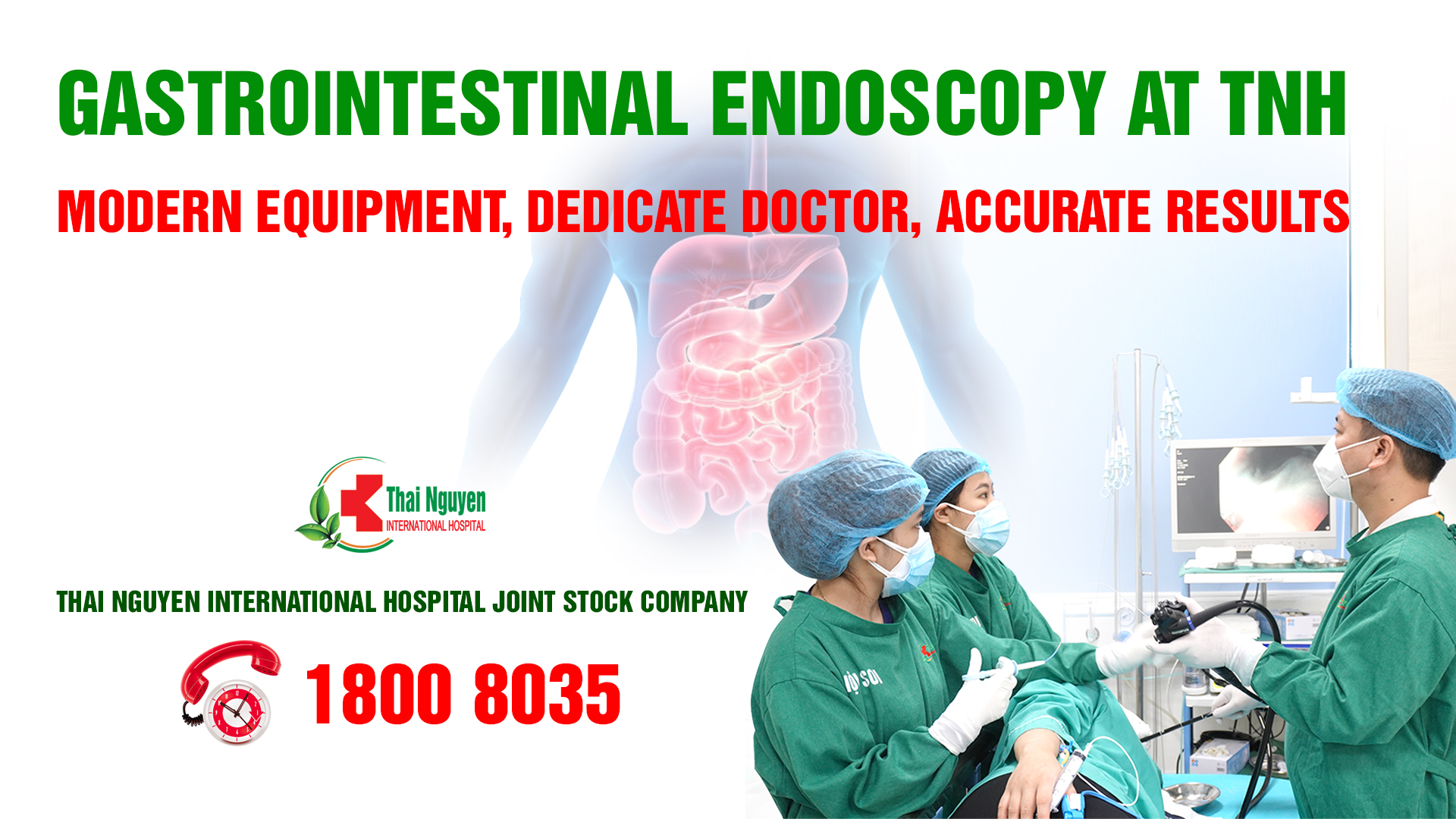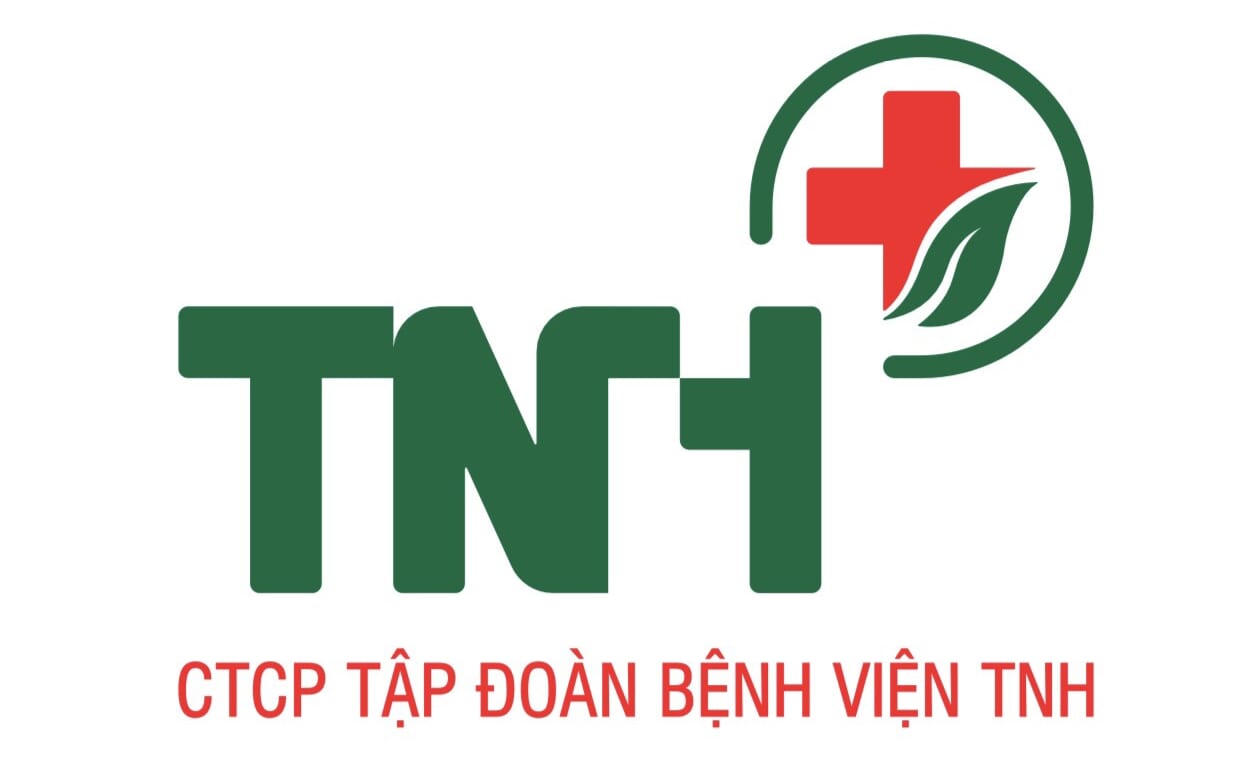Customer Care
Emergency
Customer Care
Emergency
The article was consulted by Specialist level 2, doctor Pham Trung Kien – Head of Functional Exploration Department, Thai Nguyen International Hospital.
Painless gastrointestinal endoscopy is an endoscopic technique that is performed while the patient is asleep after receiving intravenous anesthesia. The technique is performed in a short time, the patient is comfortable and there is no pain, vomiting or irritation causing pain and danger.

Gastrointestinal endoscopy is a method of direct examination of the digestive system. To perform this technique, the doctor inserts a flexible endoscope with a camera attached to look into the patient’s digestive tract. The endoscope will be inserted from the nose/throat (upper gastrointestinal endoscopy) or through the anus (lower gastrointestinal endoscopy). From there, the doctor will observe the lesions on the surface of the digestive tract.
This method helps the doctor to diagnose most of the lesions and diseases on the digestive tract such as: inflammation, ulcers, damage to blood vessels, more serious is cancer… If abnormal signs are seen, the patient may have a biopsy to determine if cancer cells are present. In addition, interventional procedures can be performed, such as: removing foreign bodies, cutting polyps, hemostasis of ulcers, sclerotherapy, dilating the narrowing of the gastrointestinal tract, esophageal vein ligation, etc., are more convenient and safer. . This is also an early and effective method of diagnosing digestive cancer.
General gastrointestinal endoscopy: Patients usually will not be anesthetized or only receive local anesthesia, so they may feel discomfort and nausea.
Painless gastrointestinal endoscopy: The patient is endoscopically after being given intravenous anesthesia. With this method, the endoscopy process will take place like a short nap of about 15 to 20 minutes, the patient will not feel any pain or discomfort, then continue to lie down until fully awake.
– To perform a painless endoscopy, the doctor will insert the endoscope through the nasopharynx or anus after the patient has been anesthetized.
– The process of anesthesia usually takes place in a short time, the patient can wake up immediately after the end of endoscopy. The patient is comfortable, even without any discomfort during the procedure, completely painless, no stimulation. Minimizing complications during endoscopy.
* Before endoscopy
The patient must fast before the endoscopy for at least 6 to 8 hours to avoid aspiration of food into the airway and to ensure the best observation and assessment of damage during endoscopy.
– Avoid eating foods with a lot of fiber, you can eat porridge, soup before the day of endoscopy.
– Do not drink colored water, milk, contrast agents… before endoscopy.
– When going to the endoscopy, patients must be accompanied by a relative.
– Inform your doctor about any recent medications or history of allergies to medications.
* After endoscopy
– Gastrointestinal endoscopy is a technique performed routinely in hospitals of TNH.
– The hospital is equipped with a modern endoscope system, which not only gives accurate and detailed results with high resolution to help clearly identify the lesion, magnify the lesion many times, but also help detect, diagnose and treat by endoscopic submucosal dissection (ESD) of gastrointestinal cancer at early or very early stage, when only a few small abnormal cells appear, localized on the surface of the gastrointestinal digestive tract surface.
– People with cancer at this stage only need to undergo flexible endoscopy, combined with interventional treatment to remove the damaged digestive tract mucosa to completely cure the disease. Good treatment effect, long post-treatment survival time with good quality of life, minimizing the risk of recurrence, reducing financial burden, shortening inpatient treatment time. Patients absolutely do not need additional treatment with other methods such as chemotherapy, radiotherapy …
– Reasonable endoscopy costs help customers save maximum.
– Commitment to confidentiality of customer information.
– Professional customer care, supporting during the entire examination period.
– Simple, fast, open and transparent payment procedures.
Easily look up information and book an appointment via:
Hotline: 1900 8035
Fanpage: Bệnh viện Quốc tế Thái Nguyên & Bệnh viện Đa khoa Yên Bình Thái Nguyên
Website: tnh.com.vn
Download TNH mobile app for comprehensive health care





TNH – SUSTAINABLE DEVELOPMENT JOURNEY Strategic partnership with Mekong Capital to shape the future of healthcare Introduction to TNH Group TNH Group Joint Stock...
On February 12, 2025, Thai Nguyen International Hospital received a 41-year-old male patient, B.V.T., residing in Vo Nhai District, Thai Nguyen Province, who presented...
In celebration of the 70th anniversary of Vietnam Doctors’ Day (27/02/1955 – 27/02/2025), TNH Hospital Group JSC organized a Sports Festival to encourage a...

